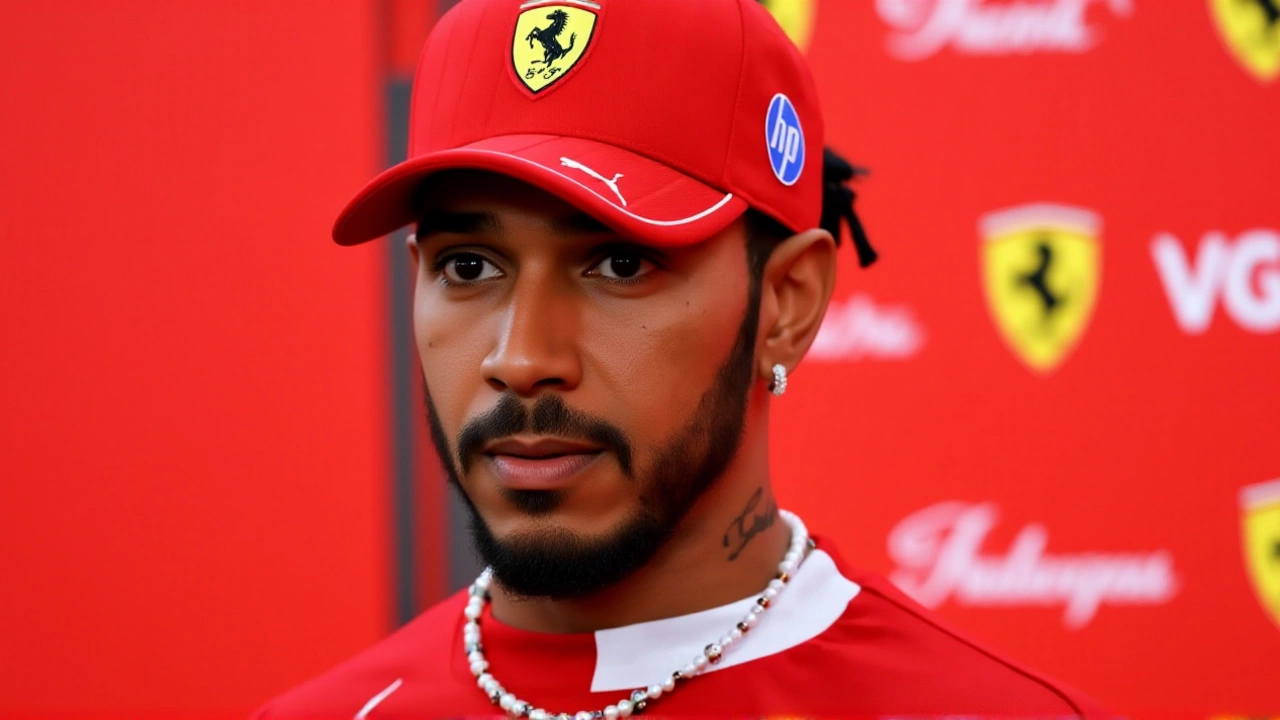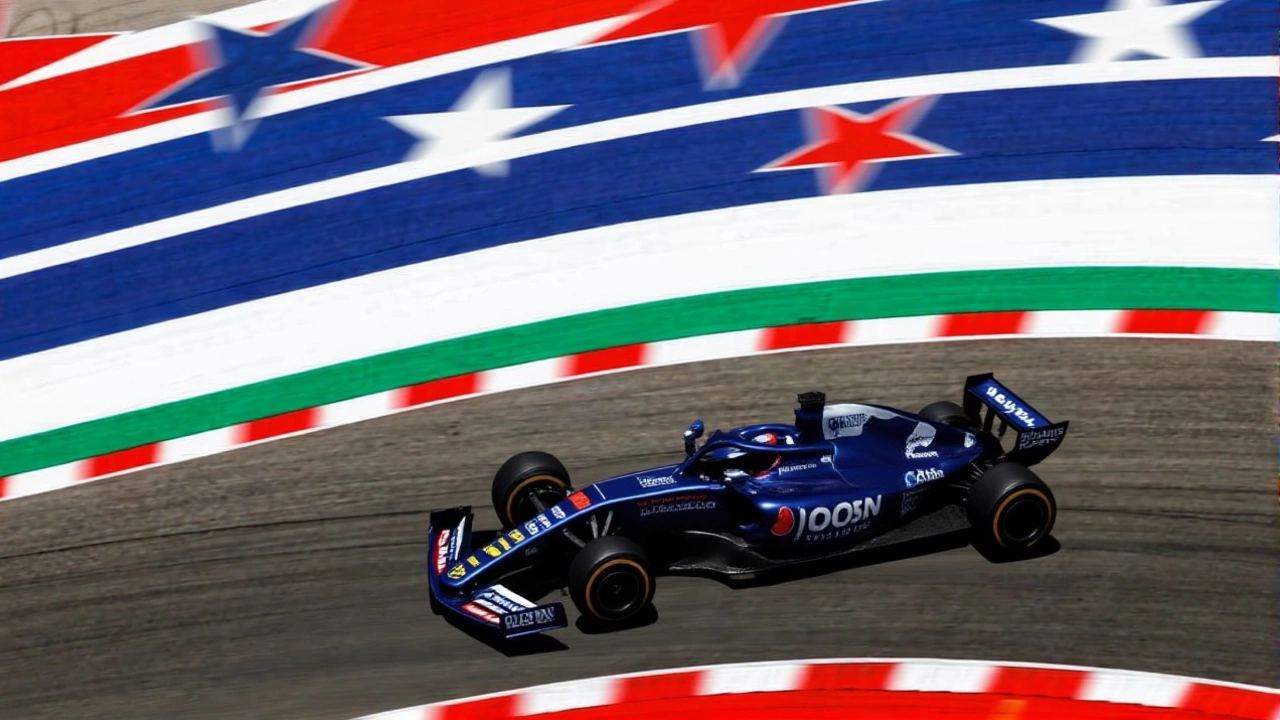
When Lewis Hamilton, the 40‑year‑old seven‑time World Champion, handed a fresh Word file to Ferrari management in early October, the move sparked fresh talk about internal politics at the Maranello factory. The filing came just days before the United States Grand PrixAustin, Texas, and it underlines a season that has left the British driver scrambling for points while teammate Charles Leclerc enjoys a 48‑point cushion.
Background: Hamilton’s Move to Ferrari
The switch from Mercedes to Scuderia Ferrari in the winter of 2024 was billed as a "new era" for both driver and team. Expectations ran high, especially after Ferrari’s 2023 Constructors title and Hamilton’s reputation for extracting performance from any chassis. Yet the 2025 campaign started on shaky ground. The SF‑25, the Italian‑made car, suffered chronic rear‑suspension woes that cost the team valuable down‑force, and Hamilton failed to mount a single podium by the end of July.
At the Belgian Grand PrixSpa‑Francorchamps, Hamilton first hinted that he had been circulating “documents” to the leadership, saying, “I’ve sent documents throughout the year… after the first few races I did a full document for the team.” The statement raised eyebrows because drivers rarely involve themselves in technical paperwork beyond feedback sessions.
What the “documents” contain
According to reporting from PlanetF1.com in August, the files touch on three core areas:
- Structural changes – proposals to tweak the way engineering, aerodynamics, and data analysis departments share information.
- Car‑specific issues – a deep‑dive into the SF‑25’s brake balance, rear‑end geometry, and the lingering suspension squeal that hampered grip in wet conditions.
- Future‑proofing for 2026 – early ideas on hybrid power‑unit integration and a possible shift to a more modular chassis concept.
Hamilton says the documents are “just a Word file,” but the content reportedly includes sketches, data tables, and a short risk‑assessment matrix. He also mentioned that he spent “a couple of days each week” at the factory during the three‑week break between the British and Belgian races, meeting with senior figures such as John Elkann, Chairman of Ferrari NV, and Benedetto Vigna, the Chief Executive Officer.
Reactions inside the paddock
Team Principal Fred Vasseur offered a measured response, noting that “driver input is always welcome, and we’ve been reviewing any constructive ideas that come our way.” Head of Car Development Loïc Serra confirmed that several of Hamilton’s suggestions are on the testing agenda for the next few race weekends.
Former champion Nico Rosberg weighed in on a television interview, saying, “Ferrari must take note of what Lewis is telling them. It’s a positive sign of his commitment, especially when the points gap is 42 – 48 points deep.” Rosberg’s backing adds a layer of credibility, given his own experience driving for a dominant team and later transitioning to advocacy for sustainable motorsport.
Meanwhile, Leclerc’s camp remains tight‑lipped. In a brief post‑race press conference after the Singapore Grand PrixMarina Bay Street Circuit, Leclerc simply said, “We’re focusing on the car, the team and making the most of each weekend.” The subtext was clear: the internal debate may be heating up, but the driver line‑up still presents a united front on the track.
Potential impact on Ferrari’s 2025 campaign
From a points‑of‑view, the gap is stark. After 18 races, Leclerc has collected 254 points, while Hamilton sits on 206. The disparity is reflected in podium tallies – five for Leclerc, none for Hamilton – and qualifying performance, with Leclerc averaging a P2 start versus Hamilton’s P5.
Should Hamilton’s suggestions be implemented, the most immediate benefit could be a more reliable brake system, something that cost him a time penalty at Singapore and dropped him to eighth place. A smoother suspension would also help preserve tyre life, a key factor on high‑wear circuits like Austin.
Strategically, the documents could nudge Ferrari toward a tighter integration of driver feedback into the 2026 power‑unit development plan. As the sport shifts toward higher‑pressure hybrid systems, early alignment between the driver’s feel and the engineers’ design could shave seconds off lap times.
However, there are risks. Overhauling internal processes mid‑season can create friction, especially if long‑standing engineers feel sidelined. The “internal politics” narrative has already begun to surface in media columns, and a misstep could further erode morale during a crucial stretch of the calendar.

Looking ahead to 2026 and beyond
Ferrari’s 2026 roadmap includes a partnership with a new battery supplier and a revised aerodynamic philosophy aimed at closing the gap with Red Bull and Mercedes. Hamilton’s documents hint at an early push for a more modular chassis to adapt quickly to regulation changes – a move that could give the team a competitive edge if executed well.
In a candid Instagram post on October 15, 2025, Hamilton wrote, “Progress alone is not enough. To achieve greatness we need to go further, be better.” The post, accompanied by a photo of the factory floor, signals that the Brit is willing to stay the course, even if it means digging into the nuts and bolts of the organization.
Whether Ferrari will fully embrace the champion’s roadmap remains to be seen, but the next few races – in Austin, Mexico City and Brazil – will act as a litmus test. A stronger finish could tighten the championship race, while continued struggles may cement Hamilton’s 2025 season as a cautionary tale of talent meeting a mismatched car.
Key Facts
- Driver: Lewis Hamilton (7‑time champion) – 0 podiums, 206 points
- Teammate: Charles Leclerc – 5 podiums, 254 points, 48‑point lead
- Document submissions began after the first three races of 2025
- Primary recipients: John Elkann (Chairman), Benedetto Vigna (CEO), Fred Vasseur (Team Principal), Loïc Serra (Head of Car Development)
- Upcoming races where changes could be evident: United States GP (Austin), Mexican GP, Brazilian GP
Frequently Asked Questions
How might Hamilton’s documents affect Ferrari’s car development for 2026?
The papers flag early integration of driver feel into the hybrid power‑unit design and suggest a modular chassis concept. If Ferrari adopts these ideas, it could shorten the testing cycle for new components, giving them a technical edge when the 2026 regulations take effect.
What specific issues does Hamilton highlight in the SF‑25?
He points to persistent brake balance problems that caused a penalty in Singapore, rear‑suspension squeal on wet tracks, and a lack of aerodynamic stability that hampers cornering speed. Each of these areas has direct lap‑time consequences.
Why is Nico Rosberg’s endorsement significant?
Rosberg, a former champion who left the sport to push sustainability, lends credibility because he’s known for honest assessments. His comment that the documents are a “positive sign of commitment” validates Hamilton’s approach beyond a driver’s ego.
Could the internal politics narrative distract the team?
Yes. Mid‑season restructures can create friction, especially if long‑time engineers feel their authority is under threat. Media speculation amplifies any tension, and a divided crew may struggle to execute flawless race strategies.
What are the chances Hamilton can close the points gap before the season ends?
Closing a 48‑point deficit with three races left is a steep climb. He would need at least two race wins and several podiums while Leclerc finishes outside the points. Improvements from the documents could help, but the odds remain low.
Leave a comments